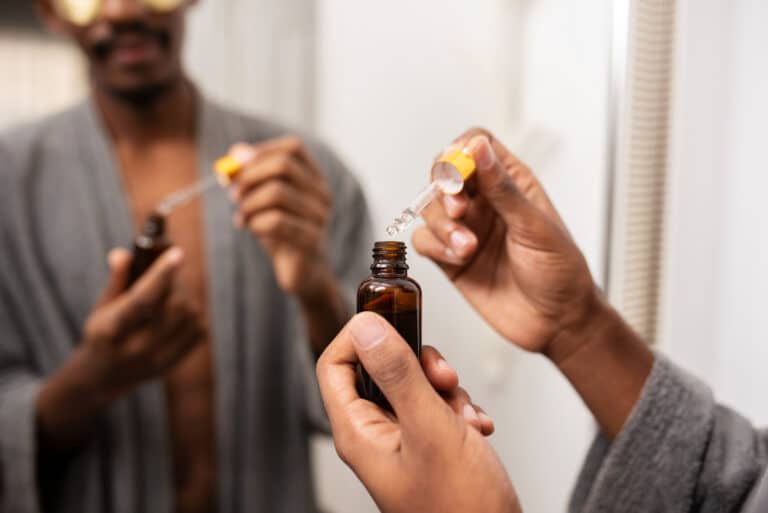Tuberculosis
Would medical marijuana have the ability to help those suffering from tuberculosis? Find out below.
What is tuberculosis?
Tuberculosis is a disease that can cause infection in the lungs or other tissues. It typically affects the lungs but can also affect the spine, brain, or kidneys. “Tuberculosis” comes from the Latin word for “nodule.”
Tuberculosis is also known as TB. All people who become infected don’t get sick, but you would need treatment if sickness occurs.
The three stages of TB are:
- Primary infection.
- Latent TB infection.
- Active TB disease.
How does it spread?
The bacterium Mycobacterium tuberculosis causes tuberculosis. The germs are spread through the air and typically infect the lungs but can also infect other body parts. Although TB is infectious, you usually have to spend an extended period in contact with someone contagious to catch it.
TB can be spread when someone with active TB releases germs into the air through coughing, sneezing, talking, singing, or laughing. Only those with active pulmonary infection are contagious. Most people who breathe in the bacteria can fight and stop it from growing. The bacterium then becomes inactive, causing a latent TB infection.
As many as thirteen million people in the U.S. have latent TB. Some people can have a dormant, latent TB infection without it becoming active and developing into tuberculosis disease. However, it can become active if the immune system weakens and cannot stop the bacteria from growing. Researchers are currently working on treatments to prevent this from occurring.
How common is it?
Approximately ten million contract tuberculosis worldwide, and about 1.5 million die in 2020. TB was once the leading cause of death in the U.S., but the number of cases decreased rapidly in the 1950s after treatments were used.
Types of Tuberculosis
In addition to active or inactive, there are various types of TB, including the most common, lung tuberculosis. But the bacterium can also affect other body parts, causing extrapulmonary tuberculosis. You may also know about systemic miliary tuberculosis, which spreads through the body and causes:
- Meningitis is an inflammation of your brain.
- Sterile pyuria, high levels of white blood cells in urine.
- Pott’s disease, aka spinal tuberculosis or tuberculosis spondylitis.
- Addison’s disease is an adrenal gland condition.
- Hepatitis, a liver infection.
- Lymphadenitis in your neck is also called scrofula or TB lymphadenitis.
What are the signs and symptoms?
Those with inactive TB don’t typically have symptoms. However, they may have a positive skin reaction or blood test.
Those with active TB may exhibit the following symptoms:
- Bad cough for over two weeks
- Chest Pain
- Coughing up blood or mucus
- Extreme Fatigue
- Appetite Loss
- Weight loss.
- Muscle Weakness
- Chills
- Fever
- Night sweats
Diagnosis and Treatment
There are two screening tests for TB: the Mantoux tuberculin skin test (TST) and a blood test called the interferon-gamma release assay (IGRA).
Further tests to determine if an infection is active may include:
- Lab tests on mucus or lung fluid
- Chest X-ray
- CT scans
Your doctor will help you figure out the best treatment based on the following:
- Age
- Overall Health
- Severity of sickness
- How well you handle certain medicines, procedures, or therapies
- How long is the condition lasting
Treatment may include:
- Short-term hospitalization
- For latent TB: A 6 to 12-month antibiotic isoniazid will kill tuberculosis in the body. Some people with latent TB may be treated for a shorter duration of two antibiotics for only three months.
- For active TB: Your healthcare provider may prescribe three or more antibiotics in combination for 6 to 9 months or longer. Examples include isoniazid, rifampin, pyrazinamide, and ethambutol.
Can medical marijuana help?
CB1 receptors are found in the areas of the brain that control pain perception, movement, memory, cognition, emotion, and autonomic functions. CB2 receptors are typically found in immune system cells. When the proper connection between cannabinoid and receptor is made, the body is stimulated to have a specific response.
CBG works by binding to both cannabinoid receptors, where it’s thought to strengthen the function of anandamide. This neurotransmitter enhances pleasure and motivation, regulates appetite and sleep, and alleviates pain.
Recent studies on the endocannabinoid system suggest that many IBS patients may have clinical endocannabinoid deficiency (CED). An ongoing theory is that these deficiencies could come from genetics, injuries, and diseases.
Research on obese mice has proven a connection between the microbiome, gut, and brain. The microbiome of the small intestine, large intestine, and brain health are all crucial factors for some patients. The obese mice given doses of THC had improved microflora in the gut compared to mice who received the placebo.
Tuberculosis can be cured with medication, and medical cannabis has been proven to ease the painful symptoms. A 1960 United Nations Office of Drugs and Crime study demonstrates that cannabis resin helped stop the growth of TB bacteria and other pathogens.
The African Journal of Traditional Complementary and Alternative Medicine reported in 2013 on the therapeutic properties of medical marijuana in the treatment of TB.
“The therapeutic claims made on medicinal plants used to treat TB by the Bapedi traditional healers are well supported by literature, with 71.4% of the species having antimicrobial properties or have similar medicinal uses in other countries,” reports the medical journal. “This study, therefore, illustrates the importance of medicinal plants in the treatment and management of TB in the Limpopo Province, South Africa.”
A 2016 research article stated, “The cannabinoid two receptor agonist β-caryophyllene modulates the inflammatory reaction induced by Mycobacterium bovis BCG by inhibiting neutrophil migration.” The research suggests “that the CB2 receptor may represent a new target for modulating the inflammatory reaction induced by mycobacteria.”
Last Updated: June 14, 2024
Get Your Medical Card
Connect with a licensed physician online in minutes
Table of Contents
Keep Reading
-
How to Properly Store Cannabis Flower So That It Lasts
If you want your cannabis flower to last, you need to store it properly! Here’s a guide on how to do just that.
-
The Link Between CBD and Testosterone Levels
Discover the potential benefits of adding CBD to your daily routine to help support healthy testosterone levels. Learn how it can help you achieve and maintain optimal health from experts in the field.
-
What Are Edibles
If you’re looking for information on what edibles are, then this is the page for you.



